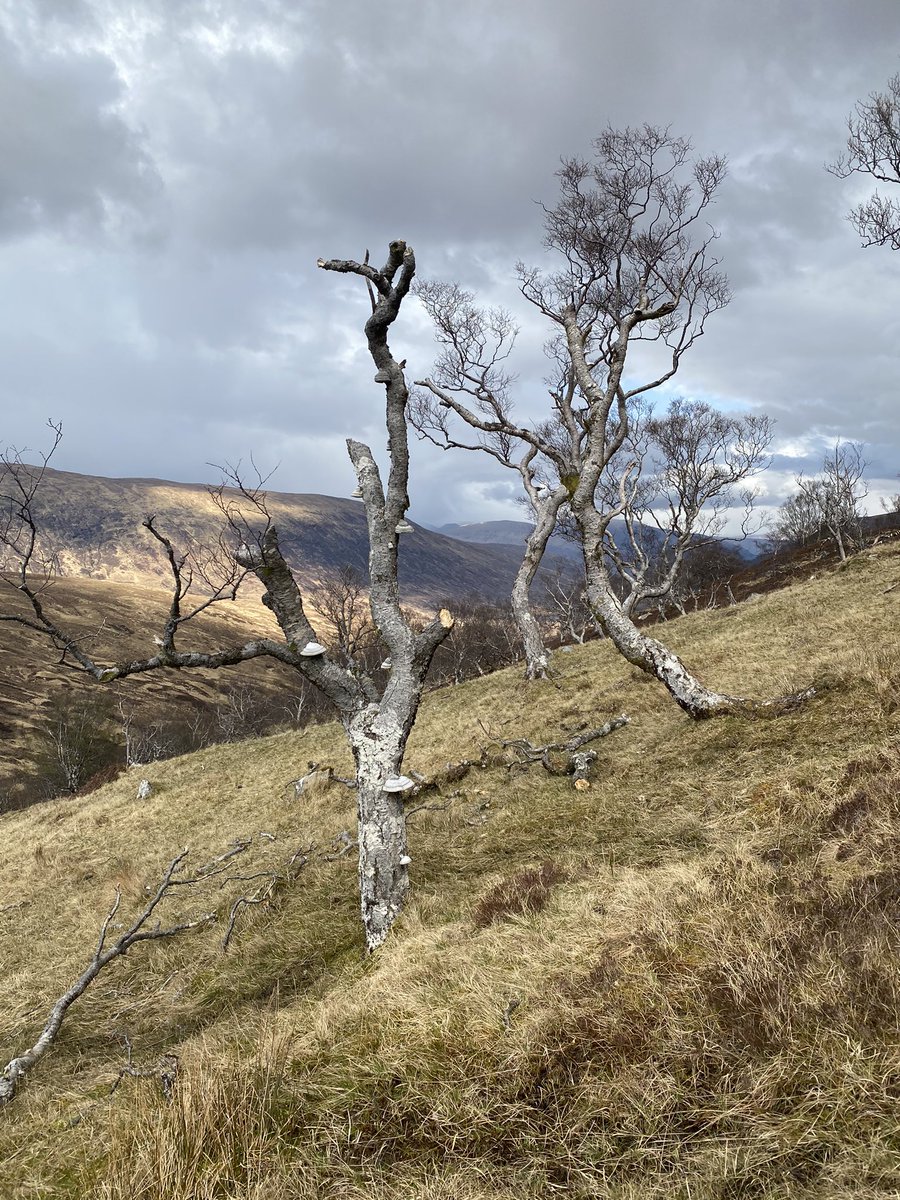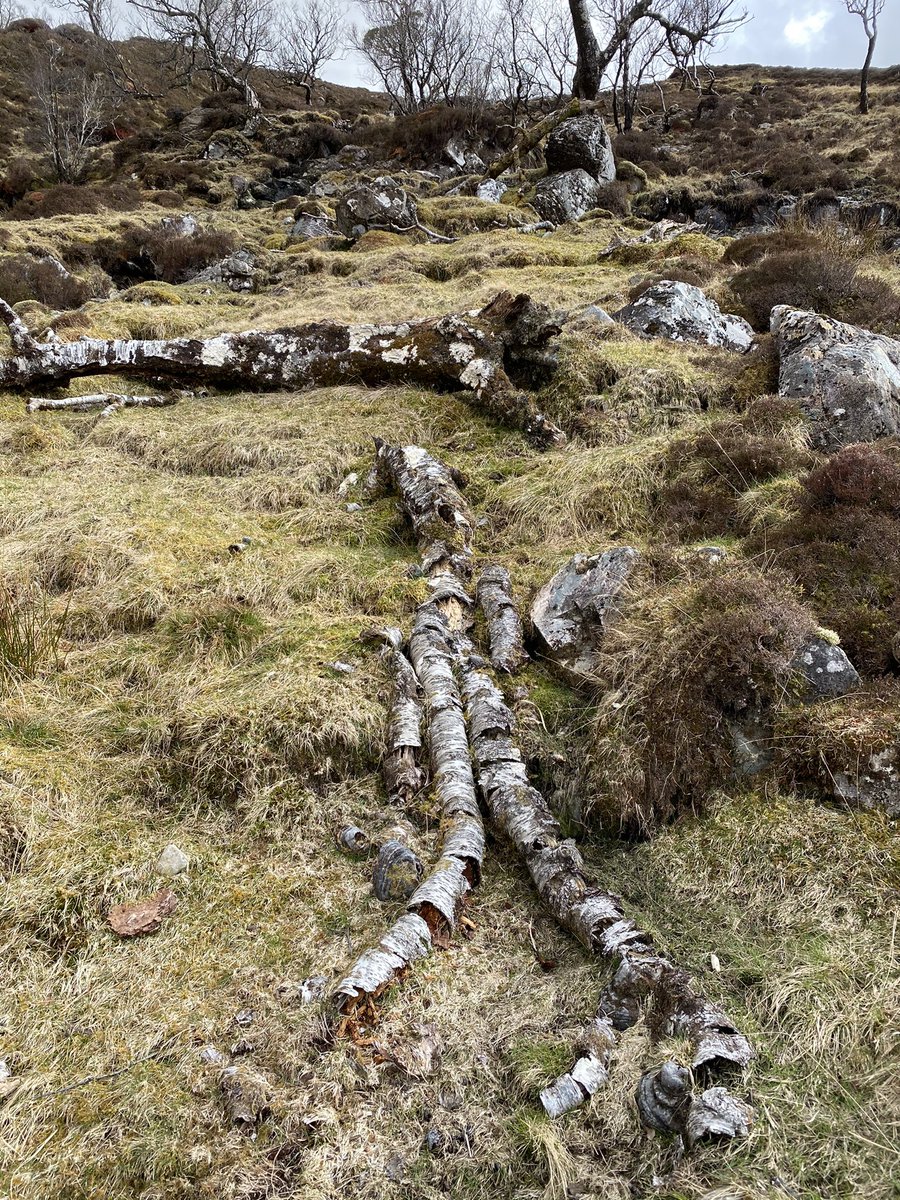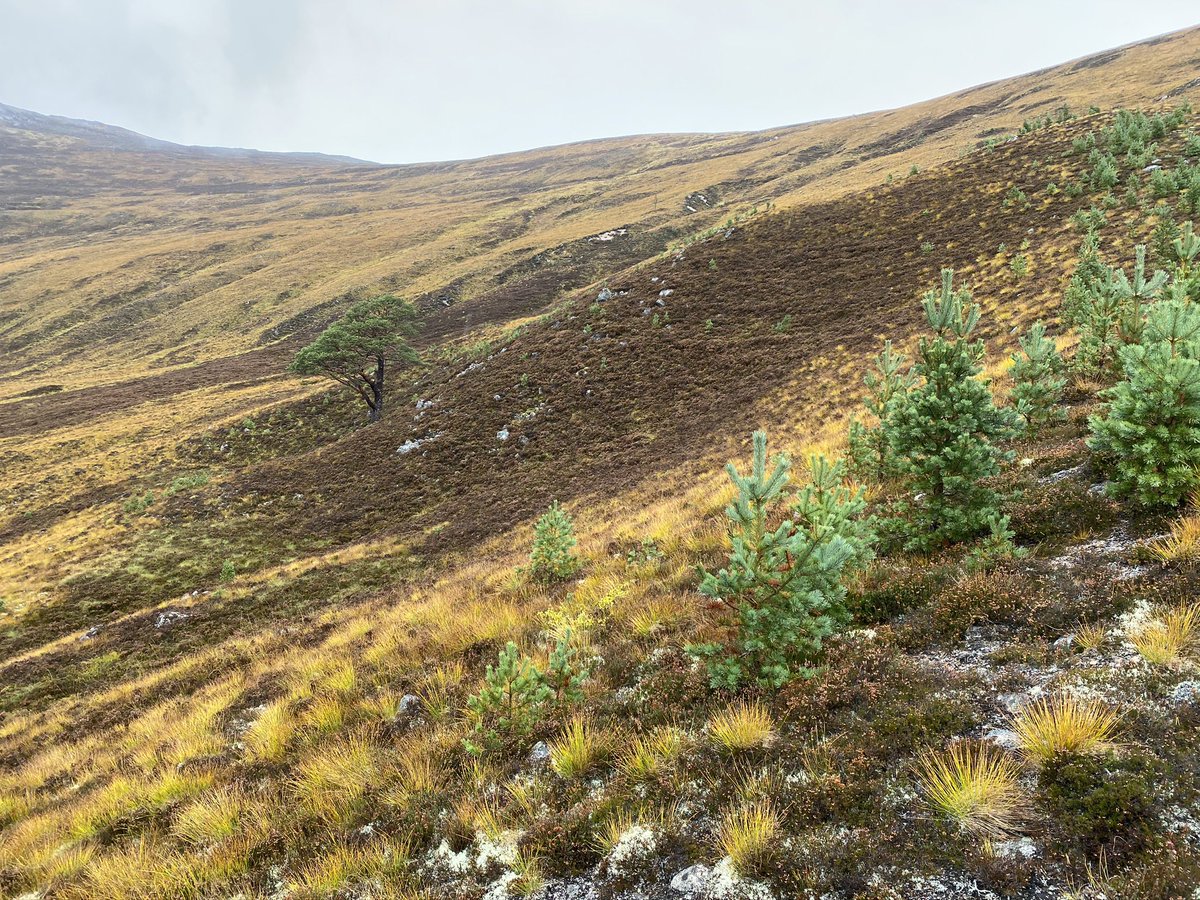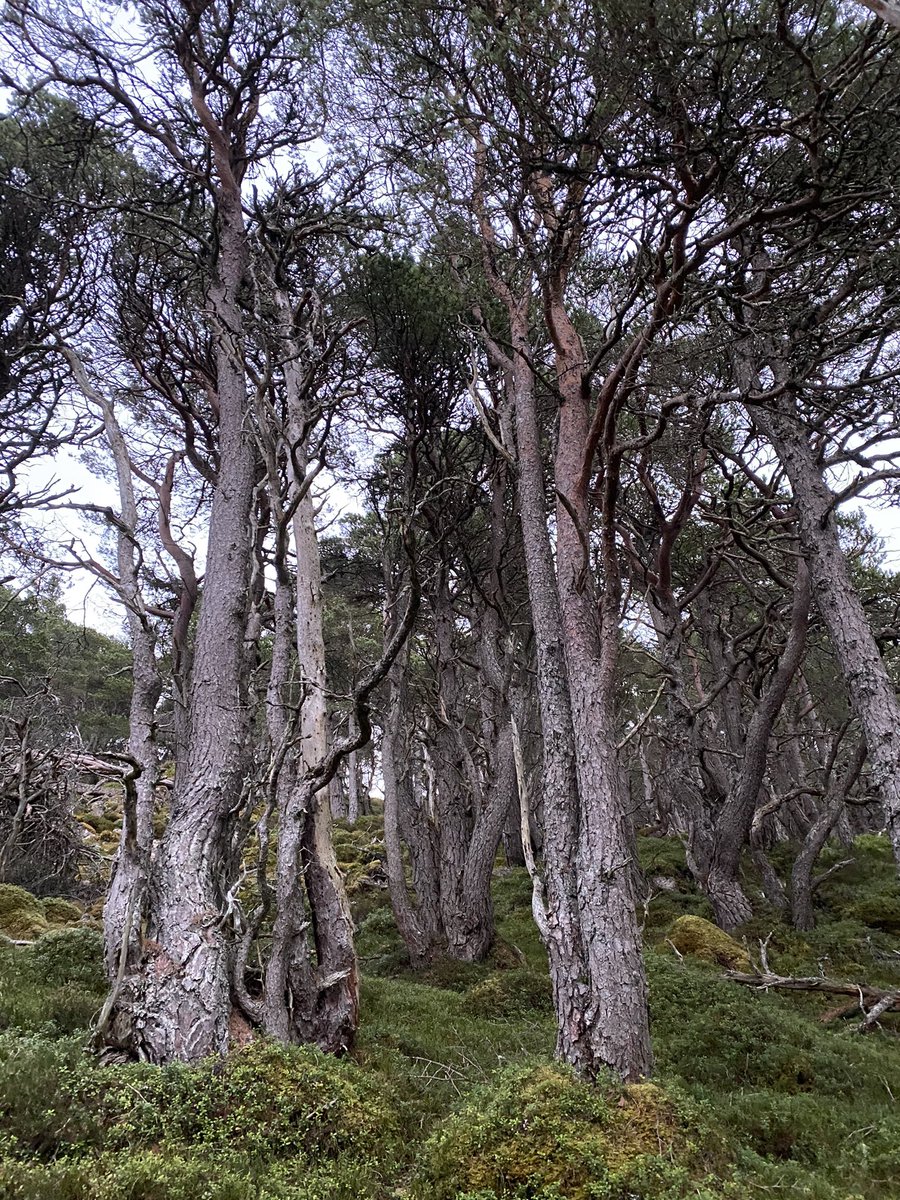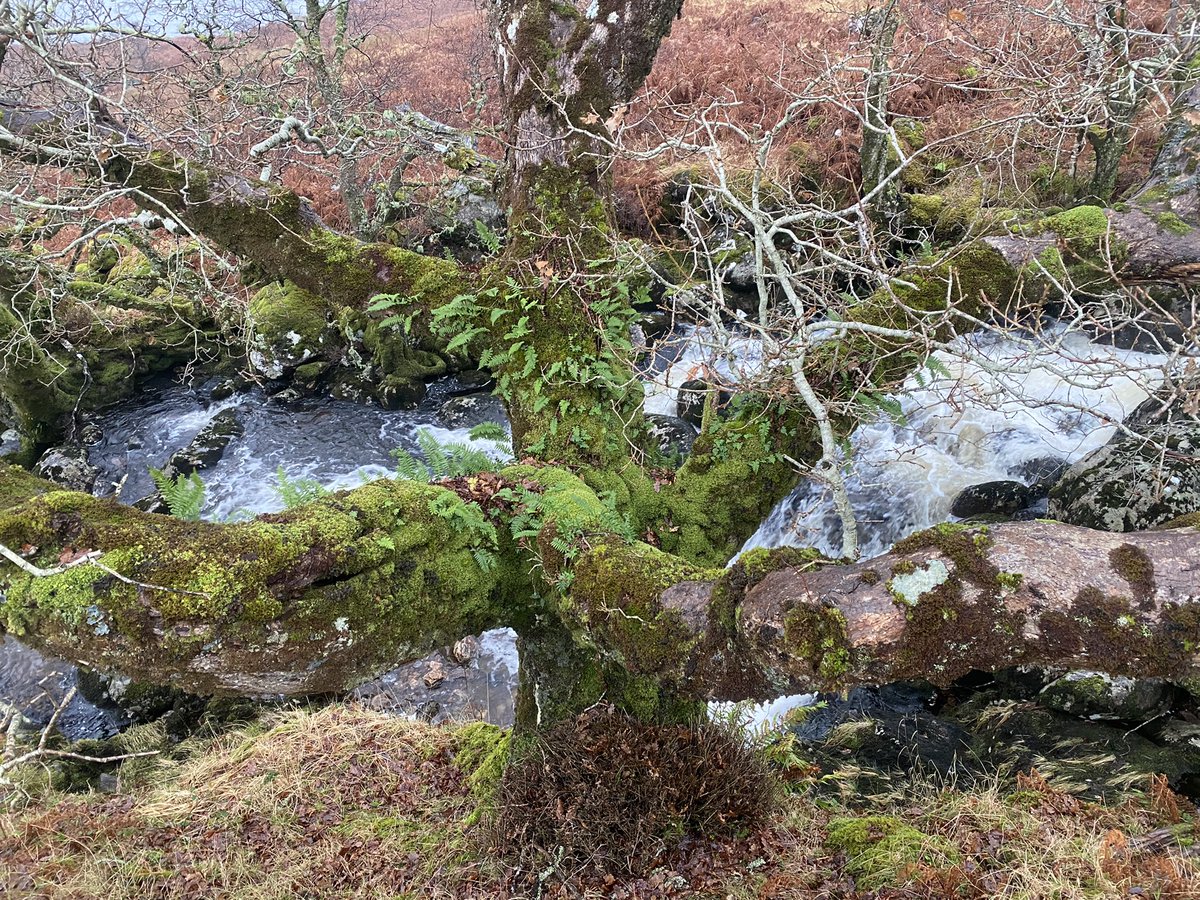this individual wild pine is, incredibly, shown on a map from the 1870s. i tracked it down and found lots of old pine stumps around it, indicating that its the sole survivor of a 2nd ancient pinewood in Glen Loyne. some thoughts... (thread) 

the context the stumps provide is critically important - this isn't just a random tree, its the remains of something much greater. because of this, some of the other wildlife from the preceding wood may still survive here (eg. lichens, mosses, fungi & inverts growing on/in it) 

the pine is the what drew me here, but the scattered birch and rowan are wild trees too - likely also survivors from the preceding wood. they provide further opportunities for old woodland associated species to cling on 

stream-sides and ravines often harbour yet more survivors, like this single clump of bog blaeberry growing nearby. bog blaeberry can be a major component of the pinewood understory in Norway 

the surviving pine is still producing plenty of cones (likely receiving pollen from the other relict pinewood in Glen Loyne), and the birch and rowan still have the capacity to naturally regenerate too 

so places like this are actually ultra-fragmented ancient woodlands - the original wood has not (yet!) been erased. these surviving wild trees & other plants still have the capacity to spread back out if browsing pressure is sufficiently reduced. eg at other relict in Glen Loyne: 

so it freaks me out that these ancient woods are:
1) not recognised as existing at all
2) not recognised as an urgent priority for restoration despite being one bad storm from annihilation
3) bc of the above, at high risk of being converted to plantation @MairiGougeon pls help
1) not recognised as existing at all
2) not recognised as an urgent priority for restoration despite being one bad storm from annihilation
3) bc of the above, at high risk of being converted to plantation @MairiGougeon pls help

• • •
Missing some Tweet in this thread? You can try to
force a refresh







